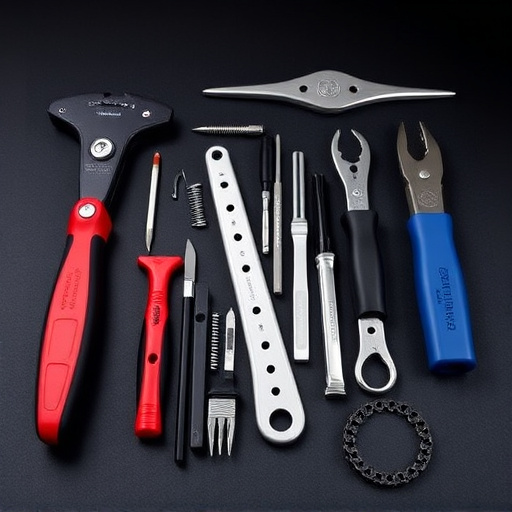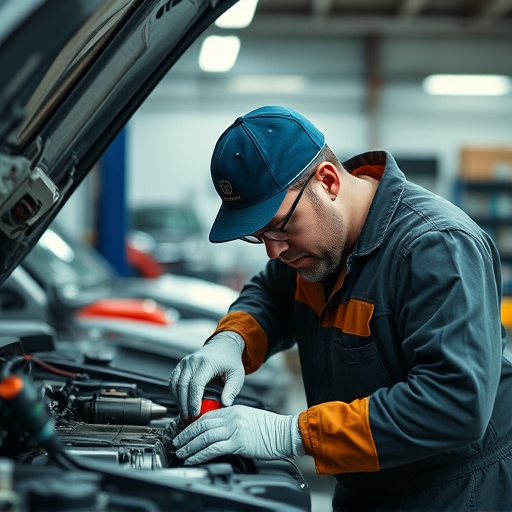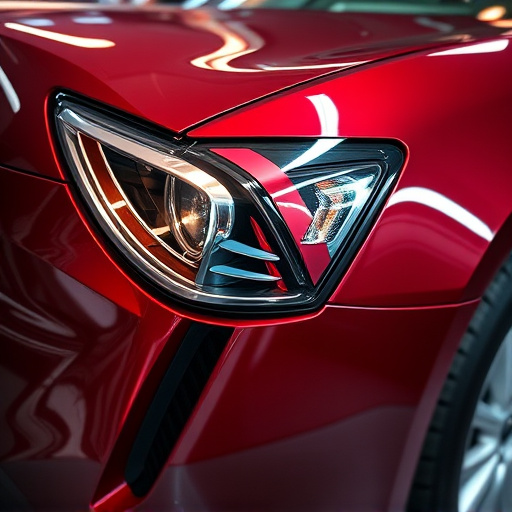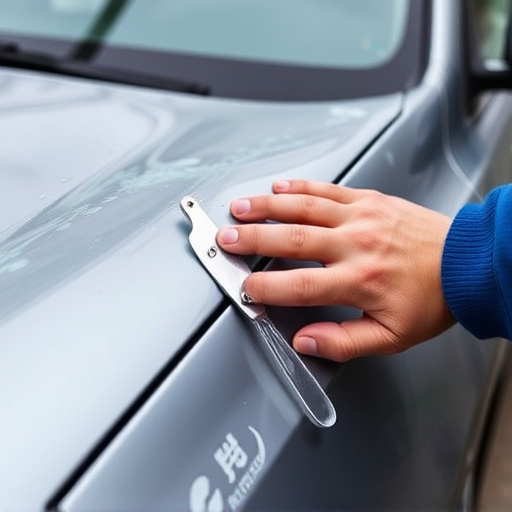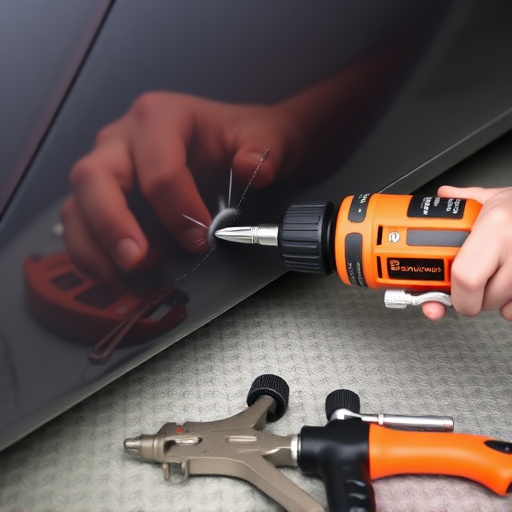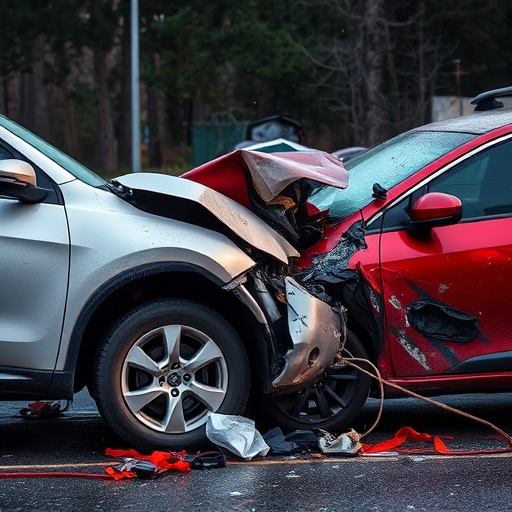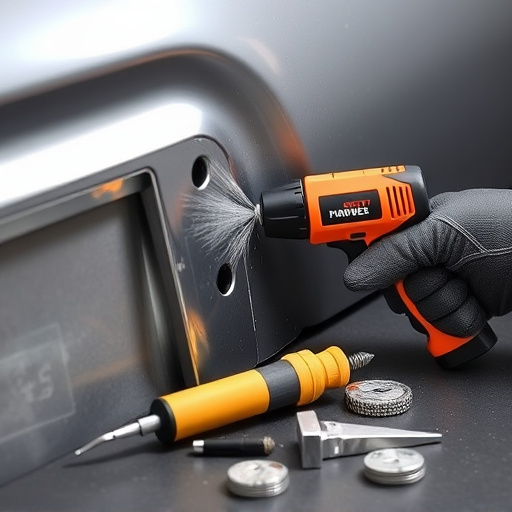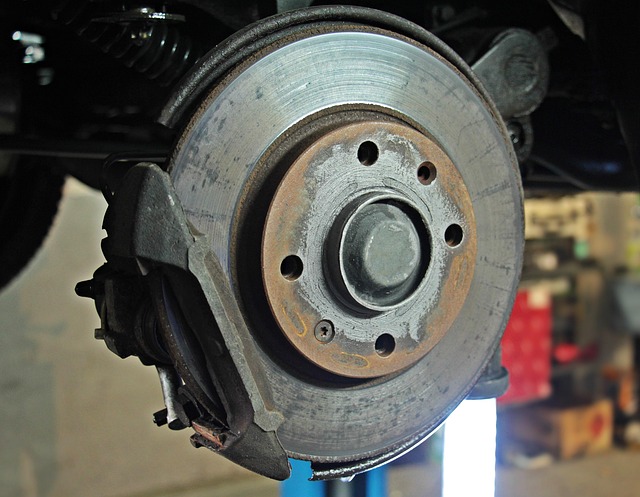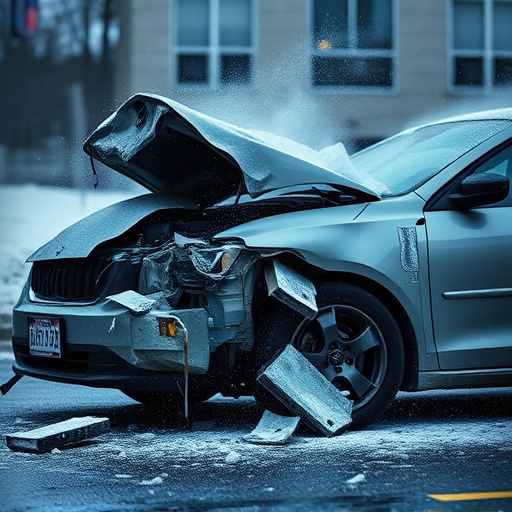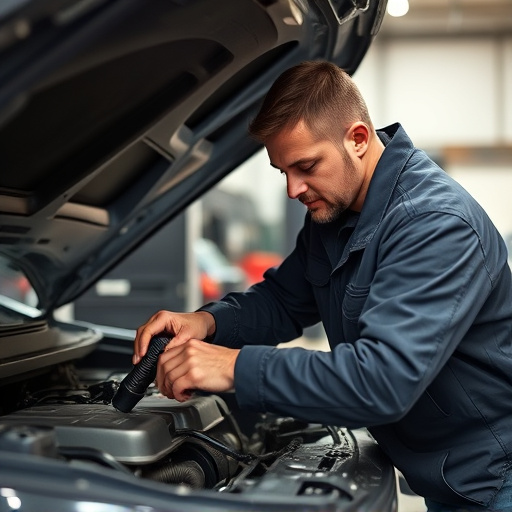Primer surfacer application is a crucial, two-part compound for auto painting, smoothing surfaces, enhancing color consistency, and reducing waste. Proper preparation, even application of thin layers, and careful technique ensure flawless results, extending vehicle lifespans and fostering eco-friendly practices in the automotive industry.
In today’s world, adopting sustainable repair practices not only extends the lifespan of materials but also contributes to a greener environment. This article serves as your comprehensive guide to mastering primer surfacer application and exploring eco-friendly repair techniques. We’ll delve into the essential role of primer surfacers in reinforcing surfaces and enhancing their durability. Additionally, learn practical steps for efficient application, ensuring optimal results. Get ready to transform your repairs into a sustainable art.
- Understanding Primer Surfacer: Essential Role & Benefits
- Step-by-Step Guide to Effective Application Techniques
- Embracing Sustainable Repair Practices for Longevity & Eco-Friendliness
Understanding Primer Surfacer: Essential Role & Benefits
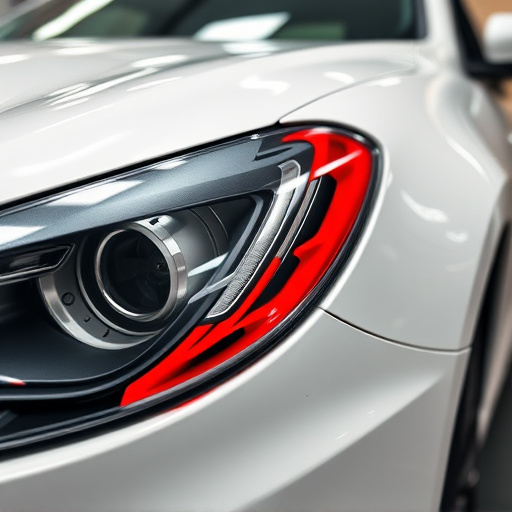
Primer surfacer is an indispensable component in the automotive painting process, serving as a crucial bonding agent between the existing paint and the new topcoat. Its primary role is to prepare the surface by filling minor imperfections, creating a smooth base that ensures long-lasting color consistency and durability. This two-part compound, typically consisting of a resin and hardener, is carefully mixed prior to application, allowing it to adapt to various substrates.
The benefits of using primer surfacer extend beyond just repairing small dents or hail damage (car dent repair, hail damage repair). It effectively minimizes the need for extensive sandblasting or aggressive surface preparation, which can be both time-consuming and environmentally unfriendly. By eliminating the need for multiple coats of fill primer, this practice reduces waste and streamlines the process at auto collision centers, ultimately contributing to more sustainable repair practices.
Step-by-Step Guide to Effective Application Techniques

A successful primer surfacer application is pivotal for achieving flawless vehicle restoration outcomes. Begin by preparing the surface thoroughly; this involves cleaning and degreasing to ensure the primers adhere correctly. Next, mask off areas that are not to be treated, such as trim and windows, using appropriate tape or covers. Apply the primer evenly with a spray gun or roller, following the manufacturer’s instructions for drying time between coats. For optimal results in body shop services, two thin layers are better than one thick one. Allow the final coat to dry completely before moving on to car paint services or additional finishing steps.
During the application process, maintain a controlled environment with minimal dust and humidity to prevent premature drying or imperfections. Use drop cloths to protect surrounding areas from overspray, ensuring your workspace remains tidy and professional-looking. Remember, proper technique is key; take your time and be meticulous to achieve a smooth, even finish that prepares the surface perfectly for subsequent repair or paint jobs.
Embracing Sustainable Repair Practices for Longevity & Eco-Friendliness
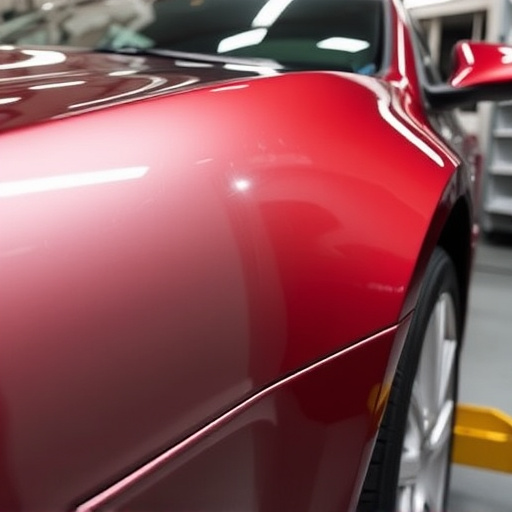
Embracing sustainable repair practices is a game-changer for both longevity and eco-friendliness in the automotive industry. By adopting advanced techniques like primer surfacer application, auto body services can significantly reduce waste and minimize environmental impact. This innovative process involves using specialized materials to fill and smooth out damaged areas, eliminating the need for extensive sanding and priming. As a result, it not only cuts down on material usage but also reduces volatile organic compounds (VOCs) emissions, making it an eco-conscious choice.
Furthermore, sustainable repair practices extend the lifespan of vehicles, reducing the demand for new car production. Efficient bumper repair and auto body repair techniques, when combined with proper primer surfacer application, can restore vehicles to their original condition while preserving their structural integrity. This not only saves money for vehicle owners but also contributes to a more circular economy, where resources are reused and recycled, fostering a greener future for the automotive sector.
Primer surfacer application isn’t just a technical process; it’s a key step towards enhancing structural integrity and promoting sustainable repair practices. By understanding its essential role, mastering effective application techniques, and adopting eco-friendly approaches, we can achieve longer-lasting results while minimizing environmental impact. These practices not only benefit the built environment but also contribute to a more sustainable future.

